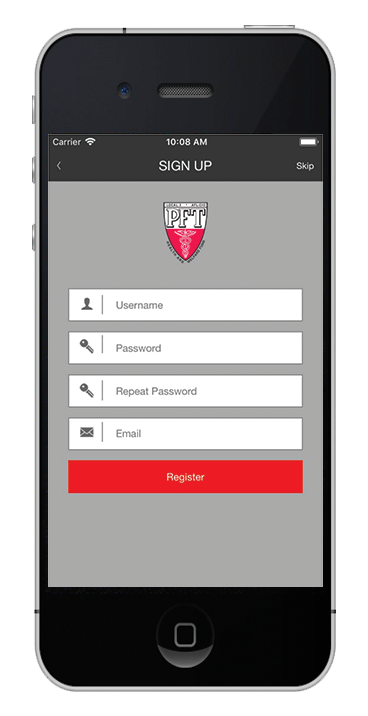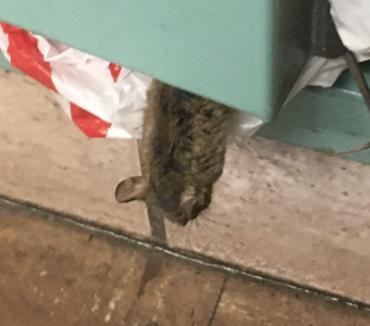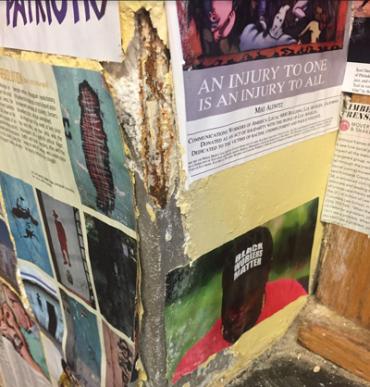A coalition brought together by the Philadelphia Federation of Teachers has taken a giant step toward fixing building problems that undermine teaching and learning in the city’s public schools, acting on a key plank of the AFT’s national Fund Our Future campaign in which educators and their communities across the country are standing up with a clear message: We’re not going to accept underfunding and crumbling schools.
That giant step is a smartphone application, conceived of by the union, endorsed by the coalition of community leaders and paid for by the PFT’s Health and Welfare Fund. Teachers and staff can use the app to detail problems with their building’s infrastructure. Users simply fill out a form and upload photos to report problems—as varied as moldy walls and rodent infestations—to their union. So far, well over 100 PFT members and parents have reported issues like leaks, flaking lead paint, and extreme heat or cold.
In response to the flood of reports from the app, the school district is trying to up its game on repairs, telling local media that it’s hiring more than 100 building maintenance workers. Before the app was created, school staff were only able to report problems through the district. Now, in addition to using district procedures, anyone can use the free app on either Apple or Android phones.
The PFT Healthy Schools Tracker has resulted in quicker repairs and more collaboration with the district. Since the app’s inception in January, 75 schools have reported more than 200 problems, and about two-thirds of the complaints have been resolved. PFT immediately forwards problems to the district, and then the union and district schedule a joint visit to the school and generate an action plan. Once the plan is carried out, the district reports back to PFT, and the member receives an update.
“Educators and children in Philadelphia are learning and working in environmentally toxic facilities,” says PFT President Jerry Jordan, noting that the problems include flaking lead paint, asbestos exposure, persistent rodent issues, the presence of mold, and even a lack of heat on bitterly cold days. “We’ve always said that many of the building issues we find can be resolved quickly and cost-effectively with better reporting, tracking and sharing of information between the union and the district.”
Still, Jordan cautions that although the tracker is a wonderful tool, it can’t fix problems that are beyond repair. Even if repairs are tracked and addressed more efficiently, sometimes schools that have been neglected too long can’t be fixed and instead must be replaced. For that, Jordan calls on Pennsylvania lawmakers to honor the state’s funding plan for school construction.
With their new phone app, our members in Philadelphia are demonstrating that the Fund Our Future campaign is not a one-size-fits-all initiative—it’s tailored to different needs. But its goal is the same everywhere: ensuring that public schools and colleges can provide the opportunities students deserve. This means we’re acting on the local level to solve problems; and on the national level, we’re calling on Congress to increase investment in school infrastructure, and to fully fund the Individuals with Disabilities Education Act and Title I.
It’s a civil engineering rule of thumb that for every dollar spent on preventive maintenance, you save four dollars on repairs down the road. Jerry Roseman, the environmental scientist who worked on the app’s development, notes that problems caught and fixed early are less likely to turn into catastrophes.
Much of what drives the high cost of repairs is deferred maintenance,” Roseman says. “It’s important that school staff can report information to the PFT, but it’s even more important that there is a system in place so these issues are fixed before they become major repair projects.”
PFT plans to continue improving and publicizing the app, spreading awareness so the union can relay problems to the district more quickly and speed up repairs. Once the union has enough data, it hopes to be proactive and help the school system develop strategies to keep problems from recurring. For instance, if members report a heating problem at several schools, it might be fixed citywide.
David Malone is one PFT member who has used the app with good results, even though he has no illusions about the condition of schools where he’s worked as a special education teacher since 1999.
“Our buildings are outdated, they’re old and they’re falling apart. They’re creating health issues,” says Malone, the building rep at F.S. Edmonds Elementary School. “I used the app to report one teacher’s room where the heater was not working. It was 55 degrees, so students were forced to wear jackets, and parents were calling and complaining. I was able to explain in the app what the problem was.” The district fixed it and the union acted as go-between.
Malone has used the app to get results on two other occasions—once to plug a rain-related leak and another time to repair a water fountain. “This app is a great addition,” he says, “to everything our union has been doing to make sure students and staff are safe and healthy.”
[Annette Licitra]




